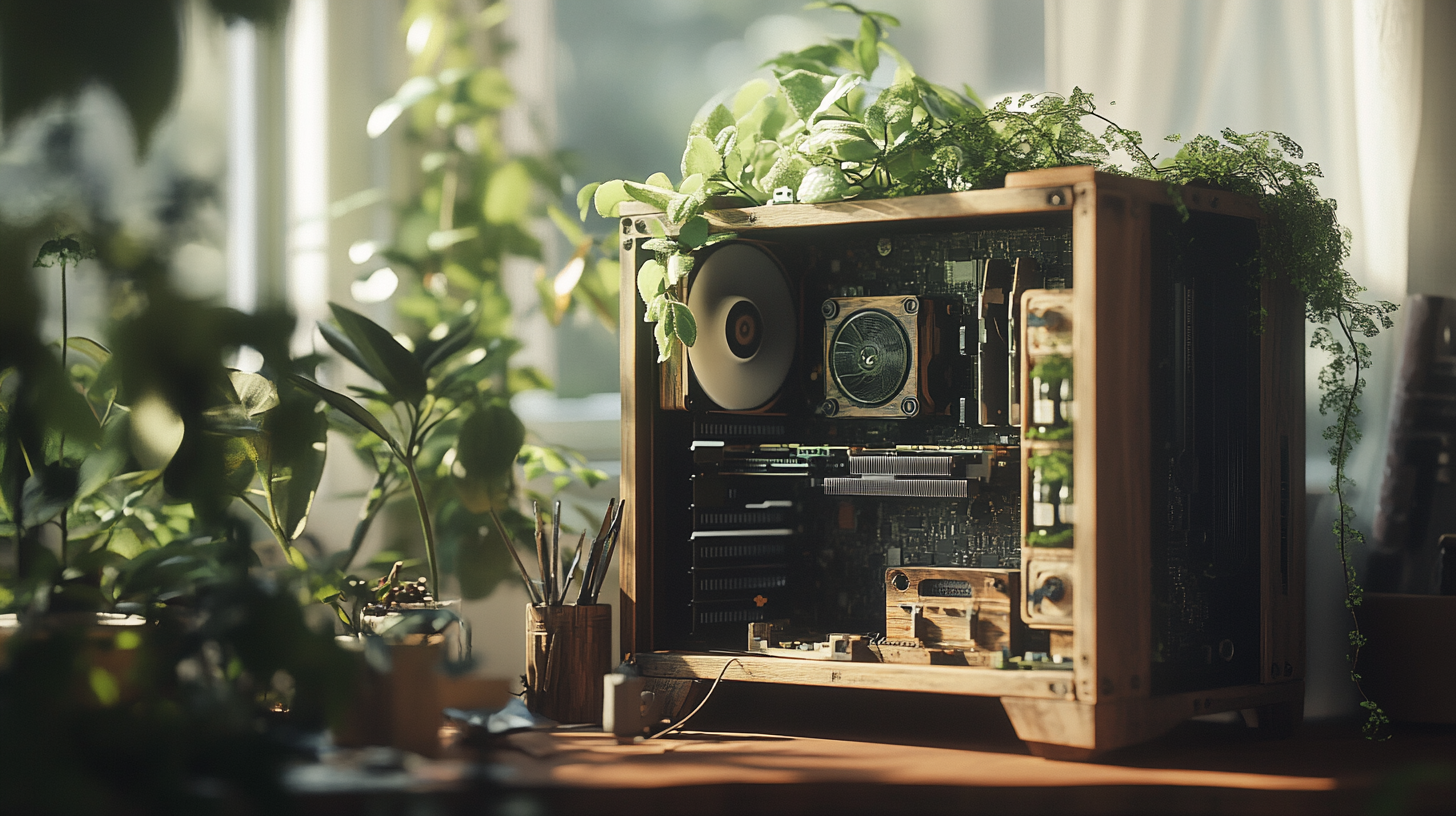Introduction
In a world obsessed with sleek, sealed devices that prioritize thinness over repairability, we’ve lost something profound: our connection to the tools we use every day. But what if we took inspiration from wabi-sabi, the Japanese philosophy embracing imperfection and transience, to reimagine our relationship with technology?
The Natural Computing Revolution
Imagine a computer that ages like fine wood, developing a patina that tells the story of its use. Not just beautiful, but honest about its nature as a tool meant to be maintained, repaired, and cherished over time. This isn’t just aesthetic romanticism—it’s a practical response to our mounting e-waste crisis and our increasingly disposable relationship with technology.
Core Principles
Natural Materials as Features: Wood, cork, and other renewable materials aren’t just decorative elements—they’re integral to the design, providing natural cooling, acoustic dampening, and biodegradability when the device eventually reaches end-of-life.
Visible Modularity: Components aren’t hidden behind glued panels but displayed through carefully crafted transparent sections. This visibility encourages understanding and maintenance rather than treating technology as a mysterious black box.
Repairability by Design: Every component is accessible. Repair tools aren’t hidden away in service centers but become beautiful implements worthy of display, encouraging regular maintenance and upgrades.
Growing with Use: Like a well-worn wooden handle or a carefully maintained garden, these devices are designed to become more beautiful with age and care, developing character through use rather than becoming obsolete.
Technical Implementation
The vision isn’t just philosophical. Modern components can be housed in:
- Sustainably harvested wooden cases with natural ventilation patterns
- Modular designs that allow for easy component swaps
- Transparent sections that turn diagnostic LEDs into aesthetic features
- Naturally antimicrobial materials like cedar in appropriate sections
- Passive cooling systems inspired by termite mounds and forest canopies
Environmental Impact
This approach offers multiple environmental benefits:
- Renewable materials capture carbon during growth
- Repairable designs reduce e-waste
- Biodegradable components ease end-of-life disposal
- Local manufacturing becomes more feasible
- Users develop lasting relationships with their devices
The Human Element
The most significant impact isn’t environmental—it’s psychological. When we can see, understand, and maintain our technology, we:
- Develop greater agency over our digital lives
- Build confidence in technical skills
- Create emotional connections to our tools
- Understand the true cost and value of our devices
- Participate in a culture of repair rather than replacement
Conclusion
The path to sustainable technology doesn’t just lie in new materials or more efficient chips—it requires fundamentally rethinking our relationship with our devices. By embracing imperfection, repairability, and natural materials, we can create technology that’s not just sustainable but more human, more beautiful, and more meaningful.
This isn’t just about creating prettier computers. It’s about fostering a new technological culture that embraces maintenance over replacement, understanding over obscurity, and sustainability over planned obsolescence. In doing so, we might just find that our devices become not just tools, but companions in our digital journey.
